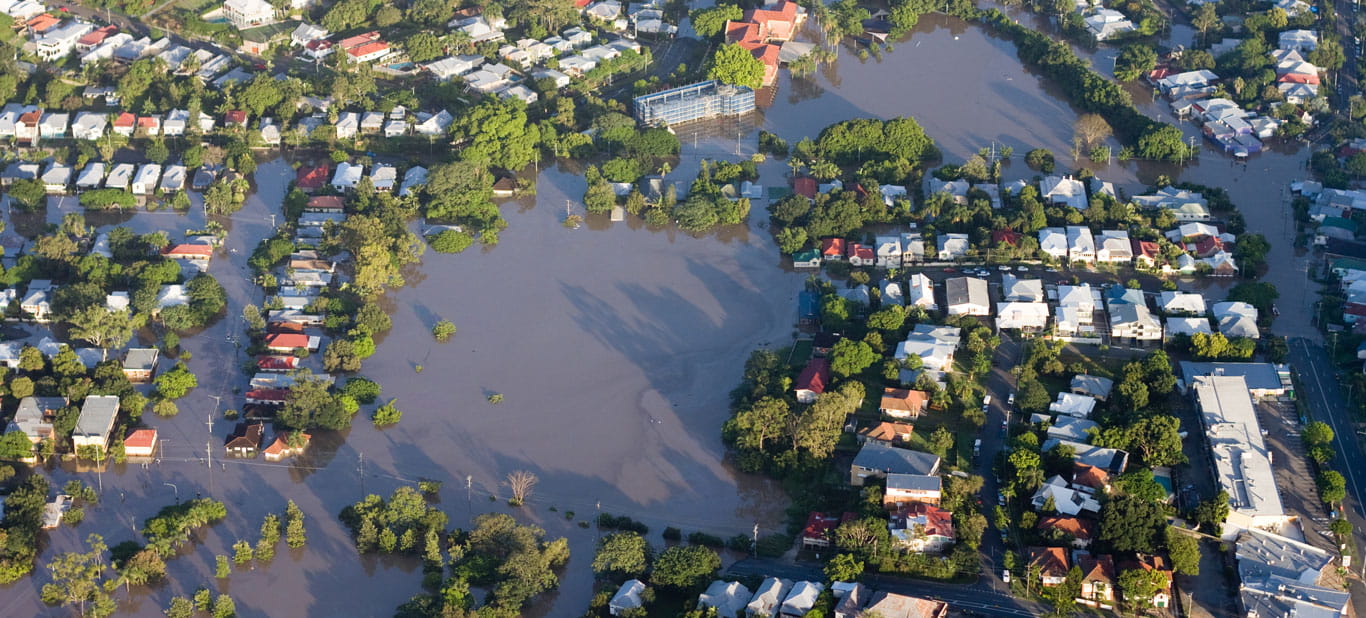The waterRIDE™ advantage
There are many products on the market today that provide the ability to visualise and animate a modelled flood scenario. With the exception of waterRIDE™, however, there are none that allow on the fly reassessment of the flood scenario for any and all flood conditions between the standard modelled scenarios.
This is best illustrated through the following example:
A town built next to a major river has a current flood model that has been assessed for standardised return periods and has a general map of what the flood zones are in the event the flood of record were to occur. Typically these flood risk maps show the 100-year event water surface level.
One morning the residents of the town awake to reports on the radio that large amounts of rainfall are predicted for the coming days and, with hot weather in the mountains, snow melt is also on the rise. Flooding is a real concern.
As an emergency response team, this is a recipe for failure. There is no idea how much water is coming, no idea where to start with the evacuation or barricade process, or whether to call an evacuation at all. waterRIDE™ was developed to provide a high level of visualisation and re-assessment of scenarios just like this.
With the results of the flood model loaded into waterRIDE™, the emergency response team can easily enter a forecasted rainfall, a forecasted river stage and within seconds a new water surface will be projected.
waterRIDE™ uses the predetermined data from the flood model to interpolate the rivers response to a forecast event. Using internal GIS capability, waterRIDE™ will then overlay this new information across any number of spatial datasets that are available. In addition to the new water surface delineation, waterRIDE™ can use internal temporal subroutines that allow queries to be run. This can take any form the ERP team requires, such as:
- Time of closure of important evacuation routes
- Depth of water over the roadway at any point
- Depth of water over the main floor level of houses in the floodplain.
The list goes on and is only constrained by the available data that can be provided.
As a result of its fully integrated GIS functionality, waterRIDE™ can provide thematic maps based on full Boolean search criteria. For example, displaying all points in the field where water depth is greater than 1m or where velocity is greater than 1 m/s. These thematic maps are produced instantaneously, which allows ERP teams to immediately prepare a response based on greater levels of intelligence.
Using a streetlight approach, waterRIDE™ can display maps of allocated evacuation routes shaded by level of service, time to closure or time to reopen as the waters recede. Understanding this temporal aspect is important to deploying crews in the field to manage the response where and when it makes the most sense efficiently.
waterRIDE™ links to the most commonly used hydraulic analysis models and allows the user to quickly extract all those values that are so important in flood forecasting and those needed in model development and debugging. In flood forecasting, some of the specific strengths of waterRIDE™ are its ability to produce flood surfaces in a few seconds, implement a range of forecasting techniques and provide powerful visualisation – all while being simple to use and operate by a person who is not a hydrotechnical specialist.
For floodplain management and planning work, waterRIDE™ automatically maps the floodway, flood fringe and flood storage, from a terrain model and hydraulic analyses, as per user-specified criteria. The built-in flood damage estimator allows the user to estimate the anticipated flood damage for any flood level, which can then be used to do a cost/benefit analysis of various floodplain management options.
The fast and powerful visualisation in waterRIDE™ is effective for providing quick and descriptive information during a flood emergency. With the dynamic scenario analyses, flood emergency managers can obtain critical information, such as the time available for evacuation along specific routes and how long the evacuation routes will be inaccessible. It will also show the spread of the flood over time, to allow the flood emergency managers to prioritise areas for evacuation, and to illustrate the potential access and risks to critical infrastructure such as hospitals, water treatment plants and sewage treatment plants.
As with any floodplain planning and flood emergency, the most important piece is fast and easily understood visual communication – a picture really is worth a thousand words in a crisis situation.
One of the primary strengths of waterRIDE™ is visual communication, which allows the fast production of high-quality illustrations of flood extents and depths for any time step of a modelled flood condition. This provides local governments and stakeholders with quick and easily understandable answers that can be provided in a very short time to both plan for and avoid disaster and better manage the inevitable flood to minimise damages and the cost thereof.


